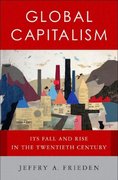Question
The reserve ratio is 10 percent. If the bank receives a customer deposit of$100,000, then an immediate effect is A. a reduction in thebank's total
The reserve ratio is 10 percent. If the bank receives a customer deposit of$100,000, then an immediate effect is
A.
a reduction in thebank's total liabilities of exactly$10,000.
B.
no change in thebank's total assets or total liabilities.
C
an increase in thebank's reserves of exactly$10,000
D.
a reduction in thebank's total assets of exactly$10,000.
When the Fed buys governmentsecurities,
A.
reservesincrease, leading to a decrease in the money supply by an amount more than the purchase of the government securities.
B.
reservesdecrease, leading to a increase in the money supply by an amount more than the purchase of the government securities.
C.
reservesdecrease, leading to a decrease in the money supply by an amount more than the purchase of the government securities.
D.
reservesincrease, leading to a increase in the money supply by an amount more than the purchase of the government securities.
To contract the moneysupply, the Fed should
A.
lower the required reserve ratio.
B.
reduce the differential between the discount rate and the federal funds rate.
C.
sell U.S. government securities.
D.
increase government spending and cut taxes.
The Federal Deposit Insurance Corporation
A.
only insures deposits inmoney-center banks.
B.
discourages banks from engaging in excessive risk taking.
C.
increases the stability of the banking system by reducing the likelihood of bank runs.
D.
was established after the Panic of 1907.
When households hold money for unplanned expenditures andemergencies, it is called
A.
the transactions demand for money.
B.
the precautionary demand for money.
C.
the irrational demand for money.
D.
the speculative demand for money.When interest ratesrise, the transactions demand for money usually
A.
decreases.
B.
increases.
C.
decreases initially and then increases to the original position.
D.
does not change.
The demand for money curve
A.
varies inversely with the supply of money.
B.
shows the relationship between the quantity of money balances demanded and the interest rate.
C.
is positively related to the interest rate.
D.
shows the relationship between money demanded and open market operations.
The demand for money is based on
A.
the demand forcash, demand forsecurities, and the demand for real estate.
B.
a demand for liquidity and wealth.
C.
the transactionsdemand, assetdemand, and precautionary demand.
D.
the demand forconsumption, demand forinvestment, and demand by government.
A sale of bonds by the Fed generates
A.
an increase in the demand for money balances.
B.
a decrease in the demand for money balances.
C.
an increase in the demand for bonds and a rise in bond prices.
D.
an increase in the supply of bonds and a fall in bond prices.
In the figure atright, if we begin at S1 and the Fed sellsbonds,
A.
the price of bondsfalls, and the interest rate rises.
B.
the price of bondsrises, and the interest rate falls.
C.
the price of bondsfalls, and so does the interest rate.
D.
the price of bondsrises, and so does the interest rate.
QuantityofBonds
PriceofBonds
D
S1
S2
The Fed engages in open market operations and sells government securities.
The result is
A.
lower interest rates.
B.
higher interest rates.
C.
interest rates remain unchanged since there is no reason to think bond prices changed.
D.
uncertain since more information is needed.
Look at the figure at right. Suppose the economy was initially in equilibrium at point A. What point would represent theshort-run equilibrium if the Fed makes an open market purchase ofbonds?
A.
D
B.
B
C.
C
D.
A
RealGDPperYear($trillions)
PriceLevel
LRAS
SRAS1
AD1
AD2
SRAS2
14
A
15
B
C
13
DExpansionary monetary policy during periods of underutilized resources can cause
A.
real Gross Domestic Product(GDP) to increase without an increase in the price level.
B.
real Gross Domestic Product(GDP) to increase with a decrease in the price level.
C.
real Gross Domestic Product(GDP) to increase with an increase in the price level.
D.
nominal Gross Domestic Product(GDP) to increase but cannot affect real Gross Domestic Product(GDP).
How would expansionary monetary policy affect the ADcurve?
A.
It would shift to the right.
B.
It would become more static.
C.
It would fall.
D.
It would shift to the left.
A contractionary monetary policy causes
A.
higher interestrates, which decreases the foreign demand for U.S. financialinstruments, raising the international price of the dollar and increasing net exports.
B.
lower interestrates, which decreases the foreign demand for U.S. financialinstruments, raising the international price of the dollar and increasing net exports.
C.
higher interestrates, which increases the foreign demand for U.S. financialinstruments, which causes interest rates to decrease. There is no effect on net exports.
D.
higher interestrates, which increases the international price of the dollar and decreases net exports.
Step by Step Solution
There are 3 Steps involved in it
Step: 1

Get Instant Access to Expert-Tailored Solutions
See step-by-step solutions with expert insights and AI powered tools for academic success
Step: 2

Step: 3

Ace Your Homework with AI
Get the answers you need in no time with our AI-driven, step-by-step assistance
Get Started


